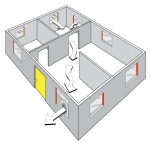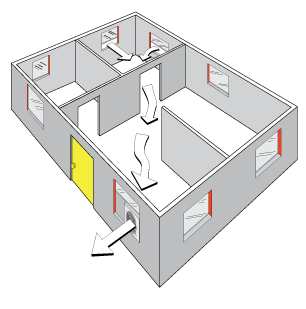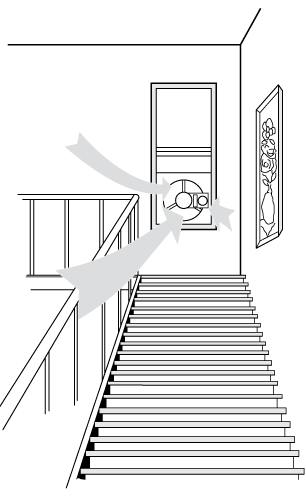Tired of your house always being hot?
Nighttime ventilation works well for cooling buildings in many climates, especially in milder summer weather. Nighttime temperature and relative humidity are big factors for determining whether you can use nighttime ventilation.
The nighttime temperatures should ideally be less than 68F or 20C, but it all depends on how acclimatized the occupants are to heat. If you don’t have air conditioning, any cooling that you get from nighttime ventilation is most welcome.
Cooling Off
The main idea of nighttime cooling is to bring in the most cool air possible through the building while exhausting the hot air out. If possible bring the air in from the coolest or shadiest location. If the wind is blowing from another direction, think about drawing the night air in from the windward direction and exhausting it out the leeward side. Experiment with which windows to open and how much to open them. You want the night air to cool the sleeping rooms and also the part of the building that is most used by its occupants.
Whole-house fans and evaporative coolers used to dominate home cooling before air conditioning. Whole-house fans draw air out of the building and exhaust the air into a ventilated attic. Evaporative coolers force outdoor air into the building and the warmer air in the home moves out through open windows. During the day, the evaporative cooler reduces the temperature of the outdoor air it pulls in. At night you can turn off the water pump and just bring the cool night air in without cooling it.
How to Set Up
- Think about the path that you want the air to take through the home to cool the important places (bedroom, living room, kitchen, etc.)
- Experiment with opening different windows different amounts to find the best airflow through your home.
- Use at least one large fan. Window fans work well in double-hung windows. Pedestal fans work well with screen doors and sliding or casement windows.
- Use two or more fans for larger buildings (over 3,000 square feet) with approximately equal fan power pulling air in and pushing air out.
If you take those steps, and if the outside temperature is low enough, you should notice a decent change in the interior temperature. The cooler night air will have cooled your home.
Once the outside temperature raises to within a few degrees of the inside temperature, close up your windows and turn off any fans if you used them. This will keep the cooler air inside the building and keep your place cooler for longer.
For more information: see our Homeowners Handbook to Energy Efficiency and Your Home Cooling Energy Guide. The Florida Solar Energy Center also has some valuable information on cooling with ventilation.




Amazing nighttime ventilation! I really like the main idea of nighttime cooling. Thanks for sharing about how to Set up it.